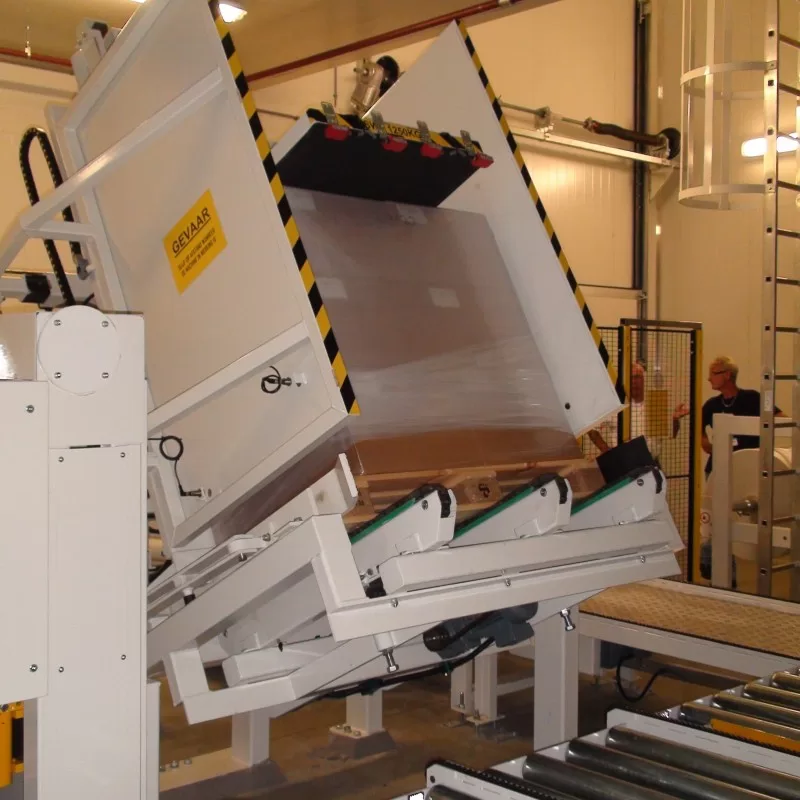
In the dynamic environment of a modern warehouse or manufacturing facility, achieving key operational metrics (KPIs) is paramount. Efficiency, safety, cost control, and sustainability aren't just goals; they are essential for survival and growth. Amidst sophisticated automation, the **pallet flipping machine**, also known as a pallet inverter, plays a crucial, often underestimated, role. Its function extends beyond simply inverting pallets; it directly impacts critical KPIs, influencing everything from throughput to workplace safety.
How can this specialized equipment significantly enhance performance against core operational metrics? Let’s delve into the specific ways a pallet flipping machine contributes to meeting and exceeding essential KPIs.
By automating a necessary but often cumbersome task, these machines help streamline workflows, minimize human error, and unlock efficiency gains in logistics, distribution, and manufacturing sectors.
Understanding its impact is key to optimizing processes and achieving superior operational results. We will explore how pallet flipping machines influence efficiency, safety, cost-effectiveness, and sustainability initiatives.
1. Enhancing Operational Efficiency and Throughput
Streamlining Workflows with Automated Pallet Handling
A primary KPI for any operation is efficiency. Manual pallet handling tasks, like flipping loads for access, transferring goods between pallet types (e.g., wood to plastic), or correcting load orientation, are time-consuming bottlenecks. A **pallet flipping machine** automates this process, performing the task in a fraction of the time required manually. This integration significantly reduces cycle times and eliminates operational pauses previously caused by manual intervention.
The result is a smoother, more predictable workflow, allowing personnel to focus on higher-value activities and contributing directly to improved overall equipment effectiveness (OEE).
Boosting Throughput Metrics
Throughput – the rate at which goods move through a system – is a critical measure of productivity. Pallet flipping machines directly increase throughput by accelerating a key handling step. In high-volume environments such as distribution centers or fast-moving consumer goods (FMCG) manufacturing, even seconds saved per pallet accumulate into significant gains over a shift or day. Automated flipping ensures consistency, reduces the potential for errors that cause rework, and maintains a steady flow, vital for meeting demanding production or shipping schedules.
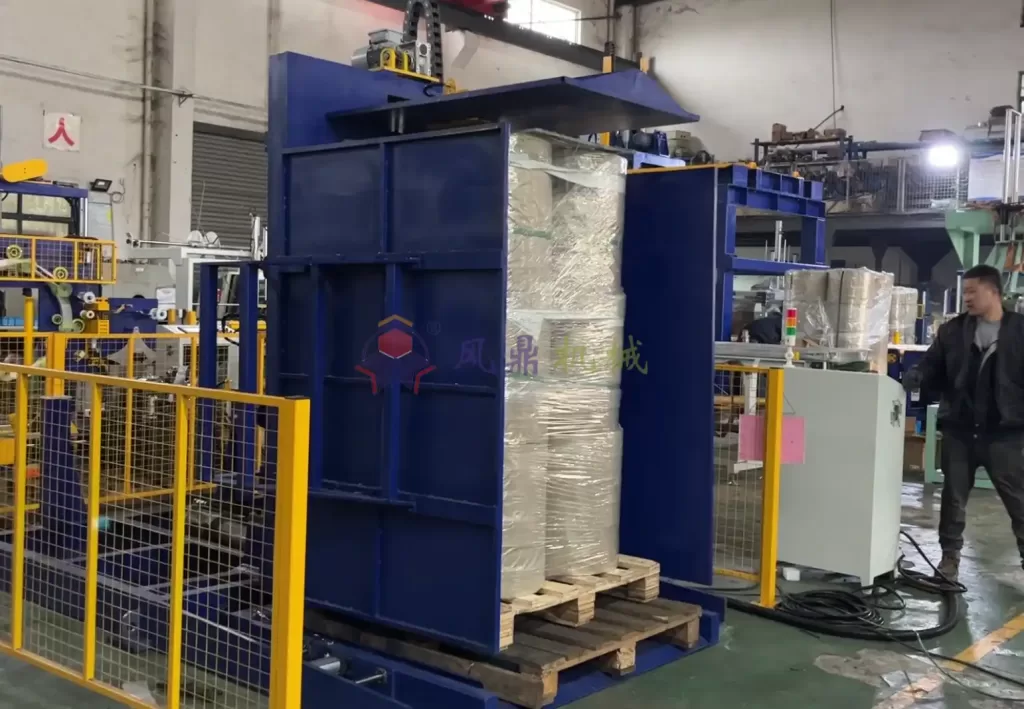
Adaptability Across Diverse Operational Needs
The versatility of **pallet flipping machines** enhances their impact on efficiency KPIs across various industries. Whether handling fragile goods in the pharmaceutical sector (requiring gentle inversion), managing heavy loads in construction materials, or meeting stringent hygiene standards in food and beverage (facilitating pallet exchange), these machines can be configured for specific needs. This adaptability ensures that the efficiency gains are realized regardless of the product type or operational constraints, making them a valuable asset for improving diverse logistical processes.
2. Improving Workplace Safety KPIs
Reducing Manual Handling Risks and Injury Rates
Workplace safety is measured by KPIs such as Lost Time Injury Frequency Rate (LTIFR) and Total Recordable Incident Rate (TRIR). Manually flipping or transferring heavy pallet loads poses significant ergonomic risks, including musculoskeletal injuries from lifting, twisting, and repetitive strain. Accidental drops can also cause serious harm. A **pallet flipping machine** automates this hazardous task, removing workers from direct physical involvement.
By minimizing manual handling, these machines directly contribute to lower injury rates, reduced workers' compensation claims, and a safer overall working environment, positively impacting crucial safety metrics. Adhering to guidelines from bodies like the Occupational Safety and Health Administration (OSHA) on safe materials handling becomes easier with automation.
Ensuring Load Stability and Preventing Accidents
Unstable or improperly stacked loads are a common cause of warehouse accidents. During manual flipping or transfer, the risk of load collapse increases. Pallet flipping machines securely clamp the load before and during the inversion process, maintaining stability throughout. This controlled movement prevents pallet or product spills, protecting both personnel and inventory from damage, thereby contributing to a lower incident rate KPI.
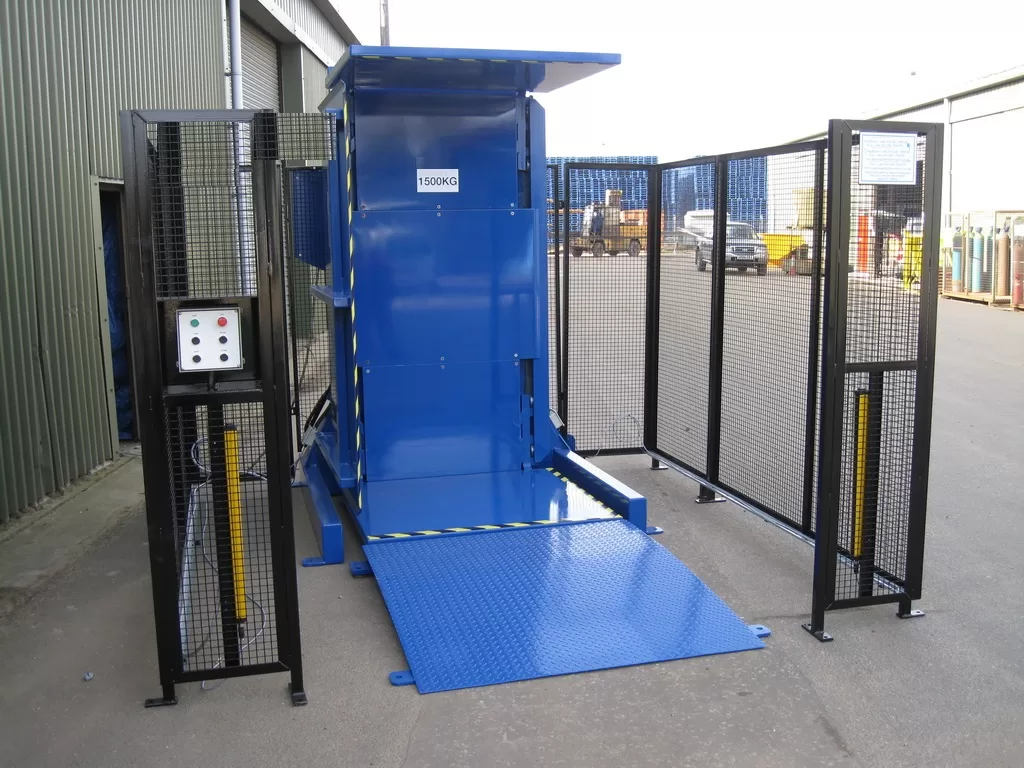
Compliance with Ergonomic and Safety Standards
Regulatory bodies increasingly emphasize ergonomic safety and hazard reduction in material handling. Implementing automated solutions like pallet flipping machines demonstrates a commitment to meeting and exceeding these standards. Features such as safety fencing, light curtains, emergency stops, and automated locking mechanisms are often integrated, ensuring compliance. Meeting these standards not only prevents costly fines but also boosts employee morale and reinforces a company culture prioritizing safety – factors that indirectly support positive safety KPIs.
3. Achieving Cost Reduction and Improving Financial KPIs
Optimizing Labor Costs and Resource Allocation
Labor often represents a significant portion of operational costs. Manual pallet flipping typically requires two or more workers and considerable time. A **pallet flipping machine** can often be operated by a single person or integrated into a fully automated line, drastically reducing the labor hours needed for this specific task. This translates directly into lower labor costs per unit handled, a key financial KPI.
The freed-up labor can be reallocated to more complex or value-adding tasks, improving overall workforce productivity and contributing to better cost management across the operation.
Minimizing Product Damage and Associated Costs
Damage to goods during handling directly impacts the bottom line through write-offs, rework, and potential loss of customer goodwill. Manual flipping increases the risk of dropping, crushing, or shifting products. The controlled, gentle action of a pallet flipping machine minimizes these risks significantly. Reducing product damage lowers costs associated with waste and returns, positively influencing profitability metrics and improving the overall Return on Investment (ROI) for inventory.
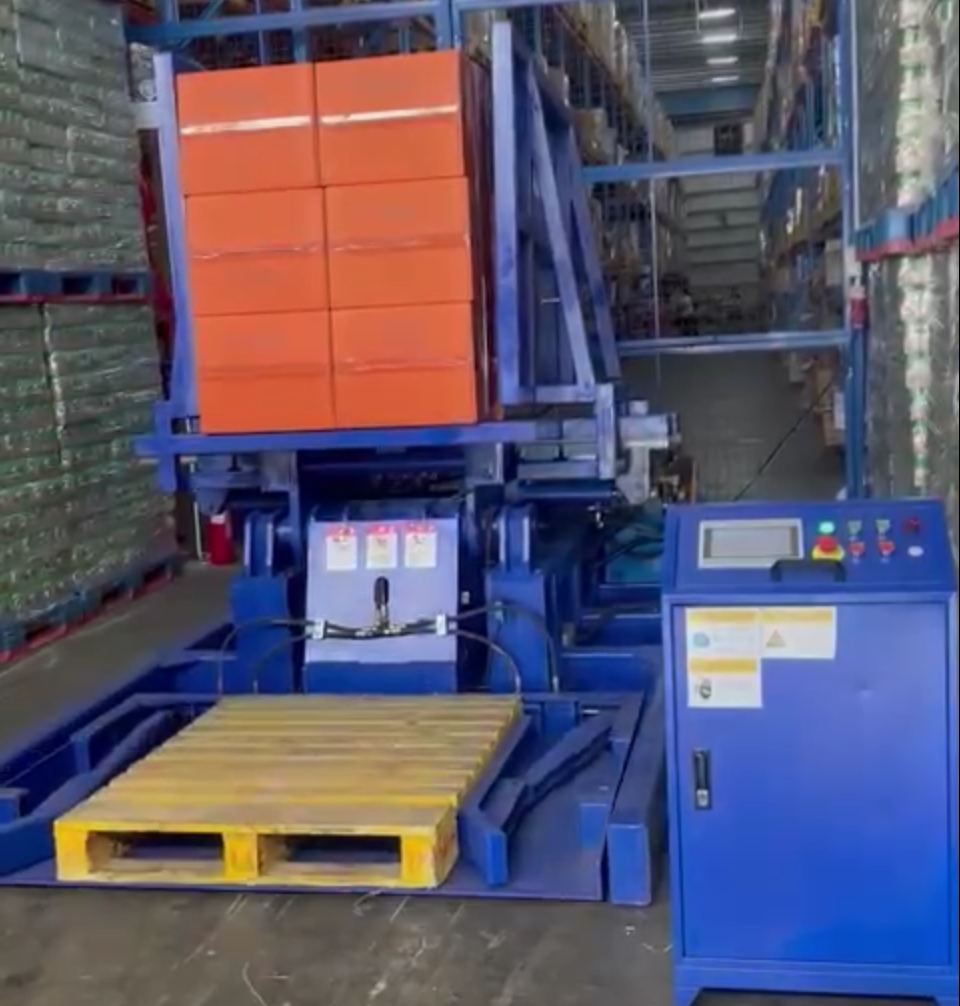
Long-Term ROI and Maintenance Savings
While requiring an initial capital investment, pallet flipping machines offer substantial long-term financial benefits. Beyond direct labor and damage reduction savings, these machines are typically robust and designed for industrial use, often requiring less maintenance than the cumulative cost of managing manual processes and associated incidents over time. Calculating the Total Cost of Ownership (TCO) often reveals a favorable ROI, especially in high-volume operations. Predictive maintenance features on advanced models can further reduce downtime and unexpected repair costs, bolstering financial KPIs related to asset management.
4. Supporting Sustainability Goals and ESG Metrics
Optimizing Energy Consumption
Modern **pallet flipping machines** are increasingly designed with energy efficiency as a priority. Utilizing efficient motors and optimized hydraulic or electromechanical systems helps minimize power consumption per cycle compared to older equipment or the energy footprint associated with coordinating manual labor and potentially other equipment (like forklifts) for the same task. Lower energy usage contributes to reduced operational costs and helps meet sustainability KPIs related to carbon footprint reduction.
Choosing energy-efficient models supports broader corporate commitments to environmental responsibility.
Promoting Pallet Reuse and Reducing Waste
Pallet management is a key aspect of warehouse sustainability. Rough manual handling can damage pallets, shortening their lifespan and increasing the frequency of replacement, leading to wood or plastic waste. Pallet flipping machines handle pallets more gently and consistently, contributing to their longevity. They also facilitate the easy exchange of loads from external (potentially disposable) pallets to internal, reusable ones, supporting closed-loop systems and reducing overall material waste – a critical factor in sustainability reporting.
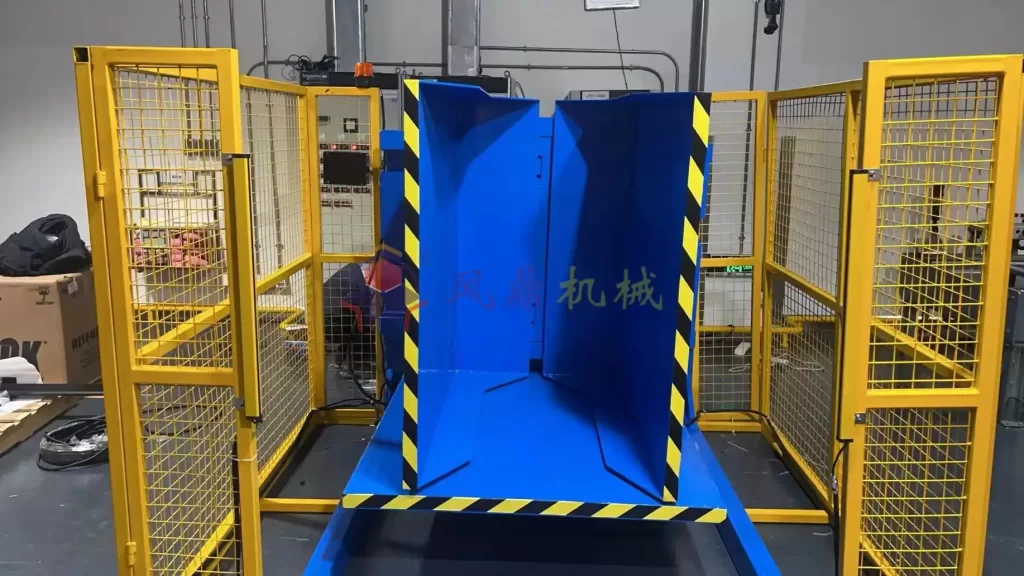
Aligning with Environmental, Social, and Governance (ESG) Standards
Companies are increasingly evaluated based on their ESG performance. Investing in technology like pallet flipping machines positively impacts all three pillars: Environmental (energy efficiency, waste reduction), Social (improved worker safety, reduced physical strain), and Governance (commitment to operational excellence, compliance with regulations). Automating hazardous tasks and optimizing resource use demonstrates responsible corporate citizenship, strengthening the company's reputation and potentially enhancing its appeal to investors, customers, and employees who prioritize sustainability and ethical operations.
Conclusion: Strategic Impact on Key Operational Metrics
Meeting and Exceeding KPIs with Pallet Flipping Technology
The **pallet flipping machine** is far more than just a piece of material handling equipment; it is a strategic tool for achieving critical operational KPIs. By significantly boosting efficiency and throughput, drastically improving workplace safety, delivering tangible cost reductions, and supporting vital sustainability initiatives, these machines address core challenges faced by modern logistics and manufacturing operations. Integrating pallet inverters into workflows allows businesses to not only meet their operational metrics but often exceed them, driving productivity and building a more resilient, safe, and sustainable operation.
Investing in a pallet flipping machine is not merely an operational upgrade—it’s a strategic decision to elevate productivity, safety, cost-efficiency, and sustainability, thereby strengthening competitiveness in today's demanding marketplace.
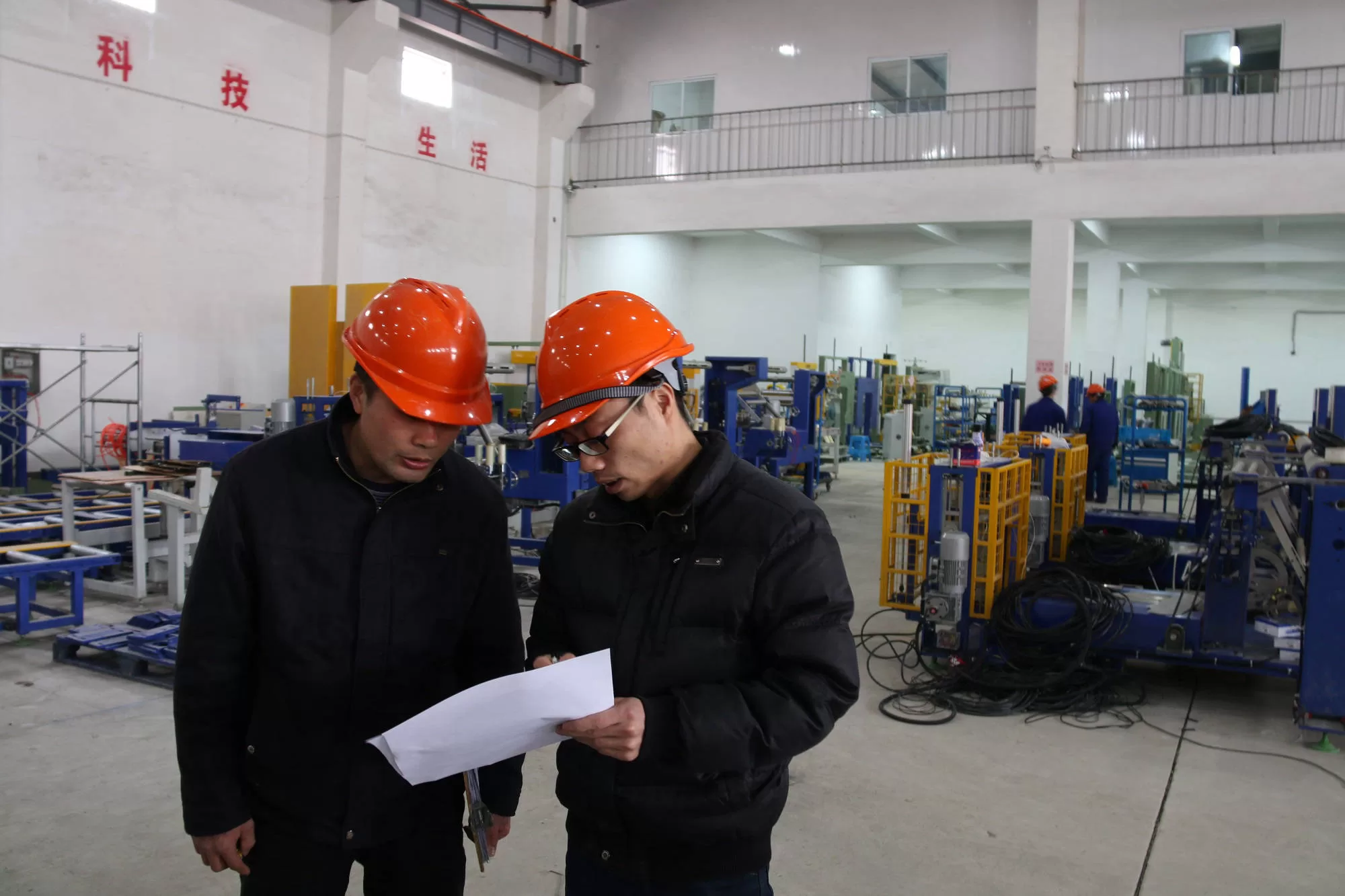
Get Your Best Solution !